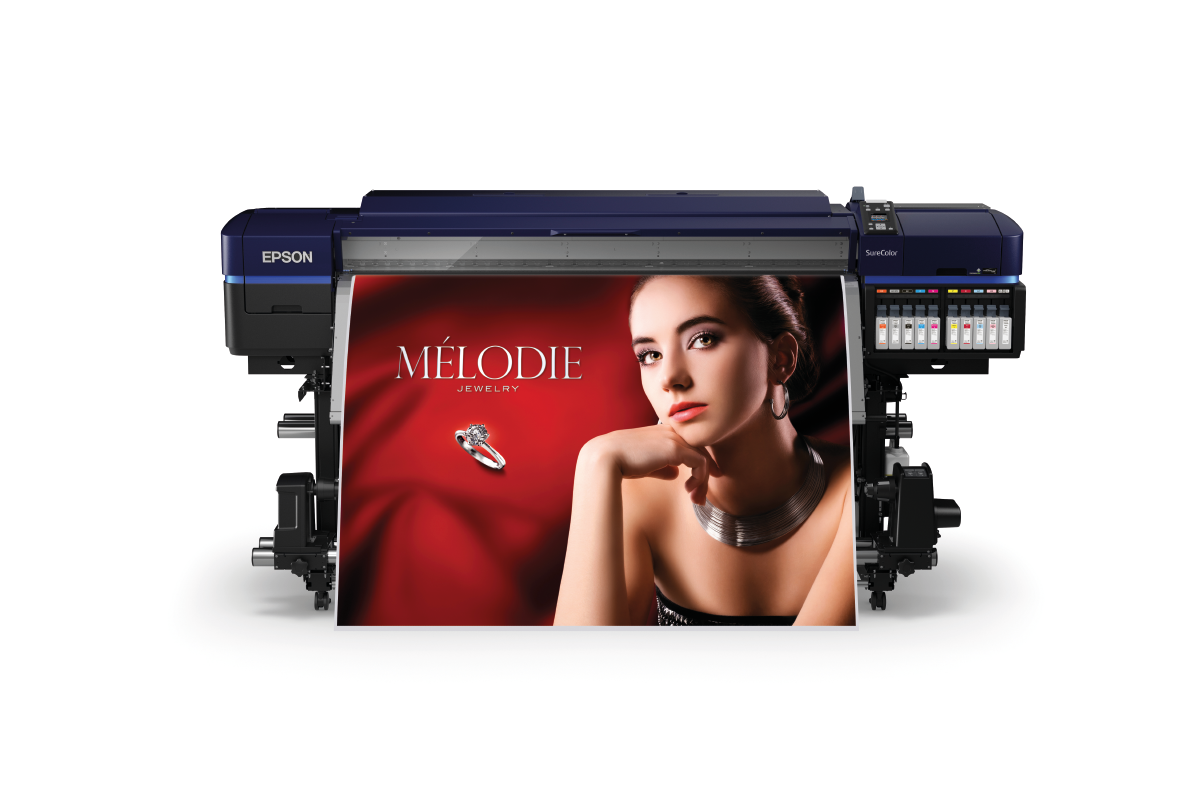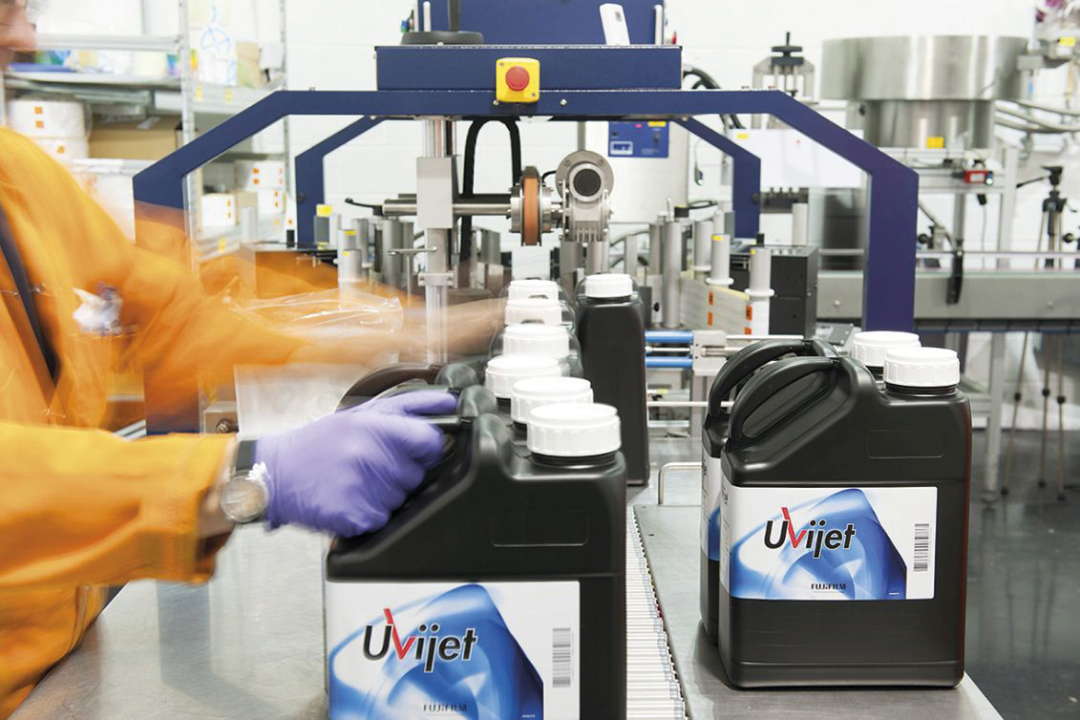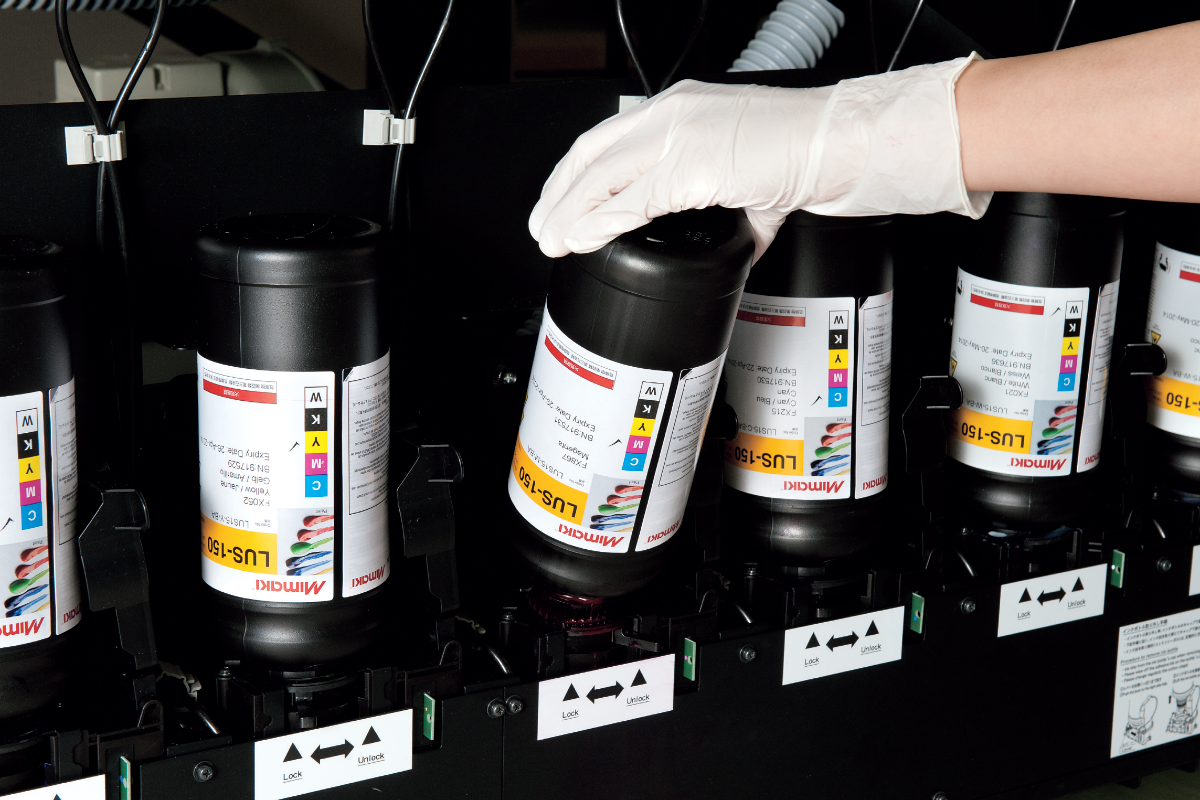Talking about printing inks? Then you’re probably complaining about their rising price. But, as Simon Creasy explains, it’s not all bad - there are plenty of developments that should actually help you make money.
For the majority of print service providers ink isn’t something that they are ever going to get overly excited about. It’s normally viewed as a necessary evil and an expensive one at that. And it’s getting worryingly expensive at the moment, as the recent Widthwise Survey 2018 underlined. The survey found that hikes in the price of supplies like ink is a major concern for nearly 55% of PSPs.
But while ink might not be considered as ‘sexy’ as a brand new all-singing-and-dancing wide-format printer, it’s rapidly becoming an area where ink and hardware manufacturers are focusing their R&D efforts because it has become clear that the right ink can elevate a bog-standard print job to a whole new level. Anyone looking for evidence of this push need only to have taken a quick spin around the exhibition halls of Fespa 2018 where the latest ink technology was one of the show’s hottest talking points.
The innovations on display at the show are being driven by a plethora of end user demands, according to John Mills, CEO of Inca Digital. “We’re finding the most important thing with inks in wide-format [at the moment] is flexibility,” he says
To this end the company recently launched the B1 UV printer OnsetM. The OnsetM is a B1 UV printer that uses new Fujifilm Dimatix small-drop, 7pl binary piezo heads and has eight ink channels, allowing the operator to choose either dual-CMYK for higher speeds, or CMYK plus light cyan, magenta and opaque white.
“We wanted printers to be able to print anything on anything, so giving them flexibility in substrate, in colour, in quality was really important. UV-cured inks give that flexibility,” stresses Mills.
Flexibility is also a big area of focus for Mimaki, which has recently added updated dye-sublimation inks and new colours to its solvent range. “Naturally, our customers are also enjoying creative and performance benefits from these and a good example is how Mimaki’s punchy orange SS21 solvent ink is proving to be a useful addition, allowing designers to hit even the most challenging of corporate palettes, brand identities and logos,” explains Brett Newman, chief operations manager at Hybrid Services, Mimaki’s exclusive distributor for the UK and Ireland.
Another interesting creative option is the latest clear varnish developed for Mimaki’s UV printers. “This can be used in a number of ways and is a great technique for finishing prints. It adds a tactile element and most importantly, a value-adding proposition to the final job,” says Newman.
Sticking with the ‘clear’ theme, EFI also recently launched clear inks in addition to thermoforming inks and reactive inks that have been developed with the textile market in mind.
“Our clear ink is a unique EFI hybrid launched feature that addresses high gloss/high emphasis, bringing to the forefront an area of the print,” says Ken Hanulec, vice president, Inkjet marketing at EFI. “The customer response has been very positive to our launches as they have enabled printing companies to respond to new requirements and generate new revenue streams. Those inks have also given our customers a strong point of differentiation in the marketplace.”
Epson has been looking to differentiate its own product offer by focusing on eco-solvent inks - in particular the UltraChrome GS3 and GS3 with red inks used on the company’s SureColor SC-S series for signage, posters, wallpaper and car wraps.

“In the last six to 12 months we have seen a surge in interest and some printers moving away from latex machines to eco-solvent having found that the heat needed to cure latex deforms or damages some substrates,” says Phil McMullin, sales manager for pro graphics at Epson UK. “With the eco-solvent SureColor SC-80600 there is a ten-colour ink set and the inks are fast drying. This means users can achieve close to 98% of the Pantone colour gamut. With GS3 inks it is possible to get exception quality on clear film, vinyl, canvas and photographic paper. Results are great even on low cost monomonic plastics.”
It will hardly come as a surprise to PSPs to discover that the one area where the majority of ink and press manufacturers are also focusing a lot of energy and effort at the moment is the environment.
“Green remains a key issue because the printers’ customers demand it,” says McMullin. “There is a groundswell of public opinion and no-one can afford to ignore the sustainability factor. The GS3 eco solvent inks hold the Greenguard Gold certification meaning they are safe to handle and use in the printing process.”
One company that has led the way in this area is HP through its ground-breaking range of latex printers. At Fespa HP unveiled the latex R-series featuring a newly formulated for rigid latex ink.
“Before the launch of the R-series the only thing you could print on rigid was solvent or UV [inks],” says Phil Oakley, HP’s UK and Ireland country manager for large-format printing solutions. “When it comes to the global debate around environmental change there are leaders and followers and we have stuck with a technology that has led the way for ten years. We continue to re-innovate again with this new formulation of inks for the R-series.”
Oakley says that the environment will continue to be a key driver for the company in terms of future new product development. “HP is one of the most sustainable companies on the planet and we are focused on how do we reduce our carbon footprint and how do we make our supplies ecosystem completely sustainable and renewable,” he adds.

These considerations are also guiding development activity at Fujifilm, but it’s not the sole area of focus for the business, according to Tudor Morgan, sign and display segment manager at Fujifilm Graphic Systems Europe.
“A lot of the work we do isn’t just about developing inks specifically for applications, but to make our ink products more robust for all applications,” says Morgan. “It is to do with our chemistry and ensuring our products have the right physical attributes, such as stability and jetting ability, so we can sell and ship the products globally. There’s a huge amount of work which is done looking at the chemistry itself to make the inks more robust and of the best quality for all applications.”
In terms of the future direction of travel for ink R&D, industry experts identify a number of different areas that are ripe for innovation. Epson is “constantly” working on the development of a wide number of different ink sets including UV, cured resin, dye sublimation, DTG, aqueous and eco solvent, according to McMullin.
“Bear in mind that Epson spends about €150m a day on R&D and its key USP in this market is that it develops and manufactures the chassis, printheads and inks of the printers because each must work perfectly in tandem for the best results,” McMullin explains. “What customers are looking for are lower running costs and higher productivity with no sacrifice of quality. Everything must be quick, easy to use and flexible in the substrates used and applications that can be addressed.”
For Inca there is a big future opportunity - and indeed challenge - surrounding the demands presented by single pass technology. “We are increasingly seeing that despite the increased productivity the reduced flexibility of single pass is proving a challenge for most people as they are unable to print more challenging substrates,” says Mills. “Single pass presents some different challenges in terms of inks. Our 1.6m machine for the corrugated market, the Jetliner, will use aqueous inks, while the Speedset will be available with UV or aqueous inks. The Jetliner prints up to 28,000m2/hr, so curing time is a really important thing to consider. If print speed is faster than cure speed, then you’re creating a bottleneck, so curing time has to be faster than the print speed, and this means choosing the right inks, and using the right curing process, is essential.”
It’s a balance that ink manufacturer Sun Chemical knows all too well. At Fespa this year the company showcased its latest Streamline UML eco-solvent ink series, fully colour matched and mixable with Mutoh UMS inks.

“In the past 20 years, across the entire print market, there have been initiatives to introduce aqueous inks which have the same print performance and quality as the current generation of inks, but with a reduced environmental footprint,” says James Gould, product manager - digital aftermarket at Sun Chemical. “The graphics market is no different - Sun Chemical has invested significantly in innovation to ensure we remain the leader in technological development. We are in the final stages of R&D to refine one of our aqueous ink chemistry platforms to enable us to offer an inkjet ink series for the high volume printed paper poster market.”
While this raft of innovative new ink products will no doubt be music to the ears of PSPs, issues around the rising price of supplies like ink are unlikely to go away any time soon.
Indeed, the situation may get worse before it gets better, according to Fujifilm’s Morgan. “There has been a rise in raw material costs - we’ve seen up to a 50% increase in recent years, which is predictably going to continue. At the moment, a lot of the increase in these costs is absorbed through Fujifilm becoming more efficient. For the UV ink manufacturing plant in the UK, we don’t send anything to landfill, we are already taking steps to generate energy for the plant, and 99% of raw materials are recycled or reused. However, ultimately, at some point these increases will have to be absorbed within the supply chain,” he warns.
That’s not to say that ink suppliers aren’t looking at ways of getting around this issue. “The print market faces challenges, such as the cost for solvents used with printing inks have increased for everyone in the market,” says Gould. “In these situations, we utilise our R&D expertise to adapt formulations, as well as leveraging our position as the number one ink manufacturer in the world to minimise the impact of these issues for our customers, as much as we can.”
As for Mimaki, it’s looking to address the rising price of ink by offering what Newman describes as “more cost effective” larger pack sizes.

“UV inks are now available in one litre bottles that offer savings by volume over the 440cc cartridges and similar choices, but even larger - 2l packs - are available for Mimaki’s solvent and sublimation inks as well,” says Newman. “Original bulk ink systems are an option even on Mimaki’s smallest solvent printer/cutter - the CJV150-75 - meaning at every level, savings can be made for customers using higher volumes of ink.”
Reducing the cost of supplies like ink - wherever physically possible - will remain a significant area of focus for ink and hardware manufacturers going forward, as will the continued emphasis on the total cost of ownership, with PSPs generally making less frequent new kit investment.
“Customers are looking more and more at the economics of their investments,” says Morgan. “The cost of energy is going to inevitably keep going up, so if printers can keep their machine longer, reduce the amount of energy they use to run it, combine it with an ink system that lasts longer, then printers can move from a two to three year return on investment to five to six years.”
So although it’s unlikely that ink will ever become the most exciting topic of conversation for PSPs, it’s highly probable that it will start to crop up in their conversations with their supply partners with greater frequency in the future.


